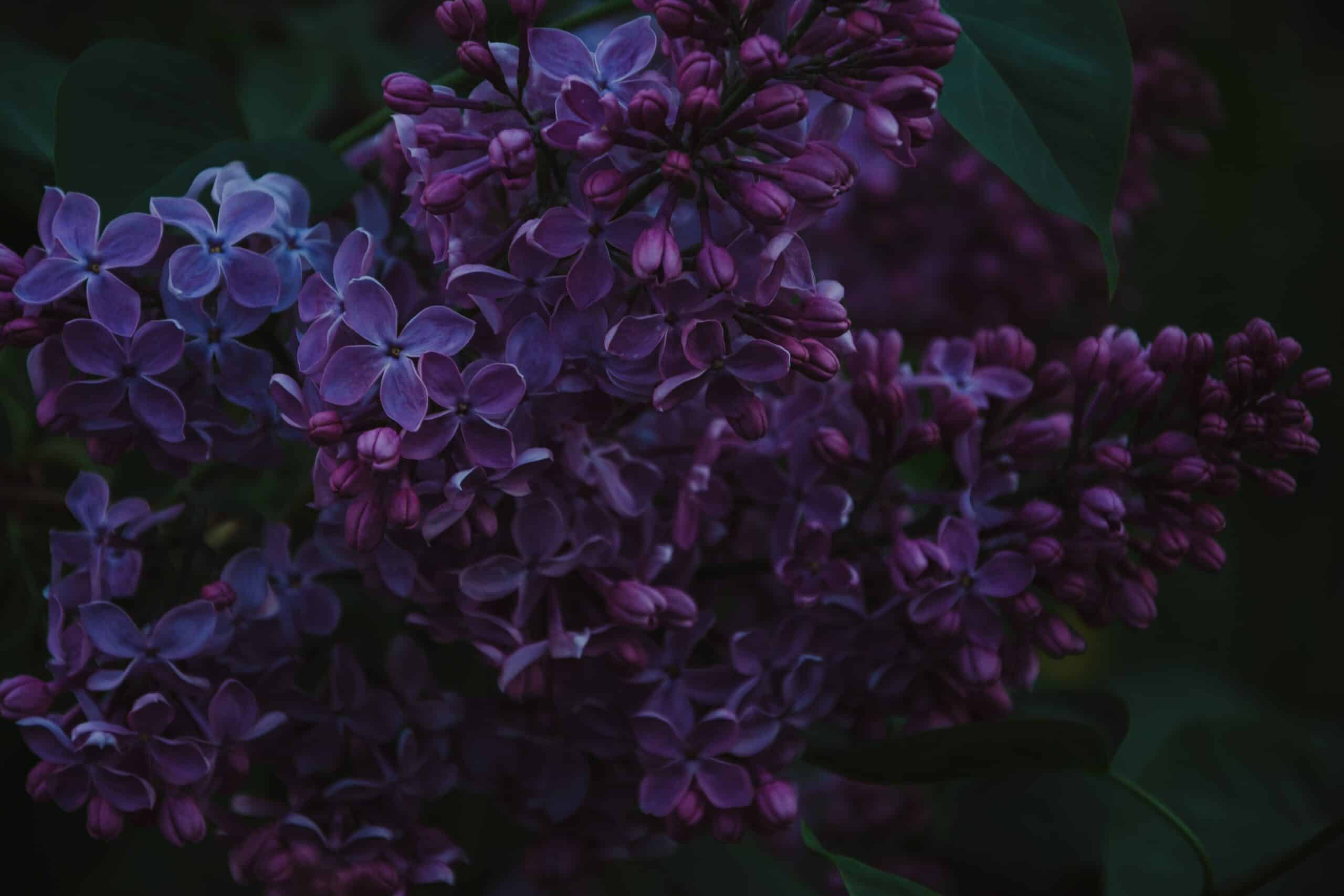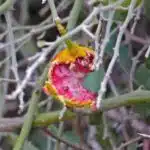At first glance, a Purple Smoke Bush Plant may look like any other shrub. Upon closer inspection however, you will be captivated by its unique beauty and array of colors. Rich purple foliage is nestled among tiny pink blossoms, an unexpected juxtaposition that creates a stunning display in any garden. But there’s more to this interesting plant than meets the eye.
The Purple Smoke Bush is much more than an attractive addition to your landscape; it’s also surprisingly hardy and easy to care for. With just a little bit of knowledge and effort, you can create a lush, thriving garden with these lovely plants as the centerpiece. From planting tips to pruning information, our guide will provide everything you need to know about growing this special shrub successfully.
Before long, you’ll have a beautiful oasis in your very own backyard – all thanks to the humble yet majestic Purple Smoke Bush Plant!
What Is A Smoke Bush Plant?
The Smoke Bush Plant is a breathtakingly beautiful, magical plant that will take your breath away! It has an enchanting purple hue that creates a stunning and captivating display in any garden or outdoor space. Not only is it gorgeous to look at, but it’s also easy to care for and maintain. This makes the Smoke Bush Plant an ideal choice for those looking to add some eye-catching beauty to their landscape without having to devote hours of time and energy into tending to it.
When caring for your Smoke Bush Plant, you’ll want to make sure it gets plenty of sunlight and water. It’s important to keep the soil moist but not too soggy, as this can lead to root rot. You’ll also need to fertilize your plant regularly with a balanced fertilizer, as this will help promote healthy growth and blooming. Pruning may be necessary from time-to-time in order to keep the plant looking its best.
All of these factors work together in harmony to create the perfect environment for your Smoke Bush Plant—one that will allow it to thrive and bring you joy for years on end! With just a bit of care and attention, this majestic specimen can provide plenty of color, texture, and interest in any garden or outdoor space.
Where Does The Smoke Bush Plant Grow?
The Smoke Bush Plant, or Cotinus coggygria, is a popular ornamental shrub with striking purple foliage. According to the Royal Horticultural Society, over 800 varieties of this plant are grown in North America alone. This makes it one of the most widely cultivated species in temperate climates.
When grown outdoors, Smoke Bush Plants typically thrive in full sun and well-drained soil. They can be grown in USDA Zones 4–8, meaning that they can survive even in colder climates as low as -30°F. In addition to this hardiness, plants need good air circulation and minimal humidity for optimal growth.
Prune your Smoke Bush Plant regularly to ensure it maintains an attractive shape and size. If planted in the ground and given enough space, the plant can grow up to 8 feet tall and 6 feet wide. When planted in a container or restricted area, however, it will stay much smaller—but still just as vibrant!
Smoke Bush Plant Soil Requirements
When it comes to soil, smoke bush plants are not too picky. They will grow in most soil types, as long as it is well-draining and remains moist. It should be composted or well-manured for the best results, plus amended with sand or clay if necessary.
Smoke bush plants prefer slightly acidic soils, so adding a bit of sulfur to the soil can help keep the pH in balance. It’s also important to ensure the soil isn’t too compacted; loosen it up with organic material before planting and mulch around the plant after it’s established.
These plants aren’t drought tolerant, so regular watering is necessary for optimal growth. However, make sure you don’t overwater them; this can cause root rot and stunted growth. With proper soil requirements met, smoke bush plants will thrive and bring vibrant colour to your garden!
Next up, let’s discuss the importance of sunlight when growing smoke bush plants.
Sunlight Requirements For Smoke Bush Plants
Lighting a fire is like providing sunlight for your smoke bush plant. The intensity and duration of the light is as important as the fuel that feeds its growth. Without the right amount of light, your smoke bush will struggle to survive and flourish. So, let’s learn about proper sunlight requirements for smoke bush plants.
Your smoke bush plant needs full sun; six or more hours a day in summer, but it can tolerate some afternoon shade in hotter climates. In cooler climates, they should receive full sun all day long. If your plant has to stay in partial shade, make sure it’s not too dark and gloomy – otherwise the leaves may turn yellow and drop off.
To ensure that your smoke bush plant gets enough light, you should choose an area that receives direct sunlight throughout most of the day. If you live in an area with strong winds, you may need to provide some shelter so that the leaves don’t dry out too quickly. With adequate lighting and care, your smoke bush will be able to thrive for many years to come!
With access to plenty of sunlight comes the responsibility of understanding how to water smoke bush plants correctly.
How To Water Smoke Bush Plants
Watering smoke bush plants is like pouring a glass of water into a desert. It’s an essential part of the plant’s care routine, and it can make or break its success. When done right, you’ll be rewarded with lush, vibrant foliage.
The first rule of watering smoke bush plants is to wait until the top inch of soil becomes dry before adding more water. This will prevent root rot due to over-saturation. Too little water can also lead to problems, so keep an eye on your plant and adjust your watering schedule as needed. If you live in a climate with hot summers, you may need to increase your watering frequency during this time.
It’s important to use lukewarm water for your smoke bush plants since cold water can shock them and cause stunted growth or other damage. You should also avoid using hard tap water if possible – instead use filtered or rainwater which contains fewer chemicals that could harm the plant. Make sure to spread the water evenly around the base of the plant and allow any excess to drain away from the roots before refilling the pot or planter. For best results, try using a soaker hose or drip irrigation system for even distribution of moisture throughout the soil.
With regular monitoring and proper watering techniques, you’ll have happy, healthy smoke bush plants that will thrive in their environment!
Fertilizing Smoke Bush Plants
Fertilizing smoke bush plants is like giving them a much-needed boost of energy. Just as an athlete might need extra nutrients to perform at their best, so do these plants. To get the most out of their growth and flower production, they need to be fed with the right nutrients.
To give them the nutrition they need, use a slow-release fertilizer that is high in phosphorus and low in nitrogen twice a year. This will help keep their soil pH balanced and provide them with the necessary micronutrients for healthy growth. If you are unsure of what type of fertilizer to use, ask your local garden center or nursery for advice on the best option for your particular plant.
When fertilizing your smoke bush plants, make sure to water thoroughly afterwards so that the nutrients reach the roots quickly and efficiently. This will ensure that they are getting all of the benefits from the fertilizer and can continue to thrive in your landscape.
Pruning Smoke Bush Plants
What is the best way to prune smoke bush plants? Pruning these plants can be a delicate process, but with the right technique, you can keep your smoke bush looking healthy and vibrant. Let’s explore how to properly prune this beautiful shrub.
First off, when should you prune smoke bush plants? The best time to prune them is late winter or early spring, just before new growth appears. This will help encourage strong and healthy growth throughout the season. To get started, remove any dead branches first. This will help promote air circulation throughout the plant and keep it healthy.
Next, you’ll want to thin out overly dense branches and shoots. Doing so will help ensure enough light reaches all parts of the smoke bush, allowing for vigorous growth throughout the year. At this stage, you can also shape your shrub however you like by cutting out extra branches or stems that are growing too large or long for your desired look. A good rule of thumb is to never cut more than one-third of a branch at a time to avoid damaging the plant’s health.
With proper care and regular pruning, your smoke bush should remain healthy for many years to come! Now that we’ve looked at how to prune these plants effectively, let’s move on to exploring how to control pests and diseases in smoke bushes.
Controlling Pests And Diseases
It’s no secret that pests and diseases can be a thorn in the side of any gardener. Taking steps to control these issues is essential for keeping smoke bush plants healthy and looking their best. From infection to infestation, let’s take a look at how to get a handle on the problem.
When it comes to fungal diseases, prevention is key. Make sure you keep your smoke bush plants watered properly, avoiding both over-watering and leaving them too dry. Pruning away dead or damaged foliage will also help reduce the risk of infection. If your plant does become infected, try removing affected leaves and treating with fungicide as soon as possible.
When it comes to pest control, there are several options available depending on the type of infestation you’re dealing with. For example, if you notice an aphid infestation on your smoke bush plant, spraying with insecticidal soap or neem oil may be sufficient. On the other hand, if you spot signs of scale insects on your plant, using horticultural oil is often more effective. Regardless of what kind of pest problem you’re facing, regular inspections are important for catching problems early and taking appropriate action quickly.
Taking all these steps will give you the best chance of keeping your smoke bush plant looking good and thriving in its environment. Now let’s move onto propagating this colorful shrub so we can share its beauty with friends or family!
Propagating Smoke Bush Plants
Propagating smoke bush plants is an easy task for most gardeners. You can do it through cuttings, layering, or division. Cuttings are the simplest and quickest way to propagate smoke bushes. Simply take a 6-inch long cutting from new growth, strip off the bottom leaves, and dip the end in rooting hormone. Then place it in a pot filled with moist soil and cover it with plastic wrap to create a humid environment. The cutting should root within a few weeks, and you’ll have yourself a brand new smoke bush!
Layering is also an easy way to propagate these plants. To layer smoke bush plants, select a branch that’s low enough to reach the ground. Place some soil over the branch and secure it in place using rocks or stakes. Once rooted, cut the branch at ground level and replant it elsewhere in your garden.
Division is another method of propagating these shrubs that’s best done in early spring when they start to become overgrown. Dig up the entire plant, then divide it into sections with healthy roots attached to each section. Replant them in different areas of your garden for more smoke bush plants!
Propagation is just one part of caring for your smoke bush plants; winter care will also be necessary to ensure their health throughout the colder months ahead.
Winter Care For Smoke Bush Plants
The vibrant purple smoke bush is a sight to behold, almost like a wispy fog that has descended from the sky. But its beauty can only be maintained with proper care and attention, especially during the winter months. With a few simple steps, you can ensure your smoke bush stays healthy and flourishing all year round.
One of the most important aspects of winter care for smoke bush plants is providing them with adequate protection against cold temperatures. Mulching around the base of the plant can help insulate it from extreme weather conditions and keep the soil moist. It’s also important to keep an eye on rainfall levels and water regularly if there isn’t enough natural precipitation. Additionally, trimming back dead or dying branches will help promote new growth in spring.
In order to maximize your smoke bush’s potential, it’s also essential to fertilize it in late winter or early spring. Use an organic fertilizer specifically formulated for shrubs as this will help encourage new growth without damaging nearby plants or flowers. Additionally, you should also consider pruning your smoke bush after flowering has finished in order to maintain its shape and size over time.
With these steps in mind, you’ll be set for success when it comes to winter care for your smoke bush plants – allowing them to thrive and bring their unique beauty into your garden long into the future. Now let’s move on to exploring companion planting with smoke bush plants…
Companion Planting With Smoke Bush
Using an idiom to illustrate, when it comes to companion planting with smoke bush, opposites attract. This type of gardening is used to create beneficial relationships between species that grow well together, providing mutual benefits such as better pollination, pest control and improved soil quality. Let’s take a look at the practice of companion planting with smoke bush.
It’s important to select plants that are compatible in terms of their growing requirements. For example, smoke bush grows best in full sun but some companion plants prefer part shade. Herbs like thyme and oregano make a good choice because they can tolerate the dry conditions smoke bush likes. Annuals and perennials such as marigolds and zinnias also work well as companions and add color and texture to the garden.
In addition to selecting compatible plants, be sure to space them correctly. Smoke bush can get quite large so it’s important to provide plenty of room for its root system while taking into consideration the needs of other plants nearby. When companion planting with smoke bush it’s important to keep in mind that overcrowding can lead to competition for resources like water and nutrients which may reduce plant health and vigor. With careful planning, companion planting with smoke bush can be done successfully for long-lasting benefits in the garden.
Benefits Of Growing Smoke Bush
Not only is the smoke bush a beautiful addition to any garden, it has many practical benefits as well. In fact, studies have revealed that this plant can increase air quality by up to 25 percent! This makes smoke bushes an ideal choice for those looking to improve their overall health.
Smoke bush plants are also known for their drought tolerance and ability to thrive in any soil type. They are incredibly low-maintenance, requiring minimal pruning and no fertilization. Additionally, they are resistant to most pests and diseases, making them a great choice for gardeners who want something easy to care for.
Another benefit of the smoke bush is its ability to attract beneficial insects like butterflies and bees. These insects help keep other plants healthy by pollinating flowers and controlling garden pests. By growing a smoke bush in your garden, you can not only add beauty but also help boost the health of your entire ecosystem.
Potential Problems With Growing Smoke Bush
Just like any other plant, growing smoke bush can present challenges. While it is a hardy shrub and incredibly easy to care for, it can still be subject to certain problems that may affect its growth. For example, Christina in Florida had a smoke bush in her garden which she pruned regularly. Despite her efforts, the bush was starting to become overgrown and too large for the space.
In such cases, it is important to be aware of the potential issues that can arise with smoke bushes so you can take steps to prevent them from occurring or know how to address them if they do. Infections caused by fungi are common in smoke bushes and can cause discoloration of the foliage as well as wilting and premature leaf drop. Additionally, aphids, spider mites and scale insects may feed on the leaves, causing damage and stunted growth.
To protect your smoke bush from these problems, regular pruning is essential as it helps control its size while also allowing airflow between branches so that any fungal infections can dry out quickly. Additionally, using an insecticidal soap or neem oil will help deter pests from feeding on the foliage.
By keeping these potential problems in mind when caring for your smoke bush, you will ensure that it remains healthy and thriving for years to come.
Tips For Growing Smoke Bush
While the smoke bush is a hardy, low-maintenance plant, there are a few tips and tricks to get the most out of your smoke bush. Maintaining the right soil pH and watering schedule can be critical for healthy growth. And while they’re generally disease-resistant, pests may still visit your smoke bush.
To keep your smoke bush happy, you’ll want to make sure the soil it’s planted in drains well and remains consistently damp but not waterlogged. The ideal pH is 6.5; if your soil is too alkaline or acidic, you can amend it with fertilizer or compost. Make sure to water regularly; during dry spells, aim for one inch of water per week.
Pests like aphids and scale insects can sometimes visit smoke bushes, so check yours every once in a while for any signs of infestation. Treating any problems promptly with an insecticidal soap solution will help keep them from becoming more serious issues. With these tips in mind, you should have no problem growing a healthy and vibrant smoke bush!
Harvesting Smoke Bush
The beautiful smoke bush plant is a sight to behold. Its vibrant purple-gray foliage and delicate, feathery plumes give it an ethereal quality that draws the eye from far away. But before you can appreciate its beauty in full, you must make sure it’s properly cared for and harvested.
Harvesting smoke bush correctly is key to making sure your plant thrives for years to come. It’s best to harvest only when the flowers are fully open and the leaves are still green, as this will reduce damage to the stems and roots. You should also check that the soil is moist enough during harvesting, as dry soil can cause stress on the plant. Additionally, be careful not to pull too hard on the stems or damage any of the branches while harvesting, as this can stunt growth or even kill your plant altogether.
When you’re ready to harvest smoke bush, use a pair of pruning shears or scissors and cut just above where a leaf attaches to the stem. This will help ensure that no damage is done while cutting off the flower heads or leaves. Then carefully remove each stem with your hands or a trowel and place them in a basket or bucket for easy transport. After harvesting, be sure to water your smoke bush thoroughly so it can recover from the process. With these tips, you’ll be able to enjoy your smoke bush for years!
Frequently Asked Questions
How Big Do Smoke Bush Plants Grow?
Smoke bush plants are an eye-catching addition to any garden, with their vibrant purple leaves and smoke-like plumes. But how big do these plants actually grow? Knowing how large your smoke bush plant will be is important for ensuring it is planted in the right location and given enough space to thrive.
Generally, smoke bush plants grow two to four feet tall and wide. Their width can sometimes be greater than their height depending on how they are pruned. They may also reach a height of six feet if left unpruned. The size of the plant also depends on the variety; some varieties may stay smaller than others. Smoke bushes typically produce flowers in mid to late summer that attract butterflies and other pollinators.
Caring for a smoke bush plant is relatively low maintenance, though it does need regular water and occasional pruning to keep it healthy and looking its best. To ensure your smoke bush grows at its fullest potential, make sure you provide it with adequate sunlight and moisture. Pruning should be done after flowering or in early spring before new growth appears – this will help control the shape and size of your plant while keeping it healthy.
By following these steps, you can ensure your smoke bush plant looks its best while reaching its full potential size!
How Long Does It Take For Smoke Bush Plants To Mature?
Ready to welcome a purple smoke bush into your garden? With its vibrant foliage and showy flowers, it’s certainly an eye-catching addition. Maturing in around three years, this type of shrub is worth the wait.
For the impatient gardener, three years can seem like eternity. But fear not – there are some things you can do to ensure your purple smoke bush reaches its full potential sooner rather than later. First off, you’ll need to give it plenty of space – six to eight feet from other plants is ideal. Make sure you position it somewhere with plenty of direct sunlight and good air circulation for best results.
You should also pay attention to the soil conditions. Smoke bush does best in moist but well-draining soil that’s rich in organic matter. Applying mulch around the base of the plant will help keep moisture levels consistent and prevent weeds from taking over. With these simple steps, you’ll be able to watch your purple smoke bush mature into a beautiful specimen in no time at all – a rewarding sight for any green thumb!
What Is The Best Time Of Year To Plant A Smoke Bush Plant?
The best time of year to plant a smoke bush plant is often a question that gardeners have. It might surprise you but the answer is actually quite simple – any time! Planting a smoke bush in the spring, summer or fall all work great, depending on your location and preference.
What makes them such wonderful plants is the fact that they can tolerate different temperatures and conditions throughout the year, meaning you don’t have to worry about when to plant them. They can adapt to their environment no matter what season it may be. The key is to make sure they are getting enough water and sunlight for optimal growth.
No matter when you decide to plant your smoke bush plant, it’s important to remember that patience is key in gardening. While these plants may mature quickly after planting, it usually takes about two years for them to reach their full size and bloom. With care and attention, your smoke bush will be sure to bring beautiful colors and fragrances into your garden for years to come!
How Often Should Smoke Bush Plants Be Pruned?
When it comes to pruning smoke bush plants, timing is key. Smoke bushes are best pruned when they are actively growing—usually from late spring to early summer. Pruning should be done at least twice a year; once in the spring to encourage new growth and again in late fall to remove any dead or damaged branches. Regular pruning helps keep the plant healthy and encourages lush foliage growth.
Pruning tools should be sharpened beforehand to avoid damaging the plant’s bark or stems. Also, make sure that all cut surfaces are clean by wiping off any dirt or debris before completing the cutting process. When pruning, aim for an overall shape that is pleasing and balanced while remaining mindful of the natural form of the shrub. This will help create an attractive and healthy-looking specimen over time.
It’s important to remember not to prune too heavily – doing so can cause stress on smoke bush plants and reduce their lifespan as well as their flowering potential. If you’re unsure about how much you should be trimming, it’s best to contact a professional arborist for advice before starting any major pruning projects on your smoke bush plant.
What Type Of Fertilizer Should Be Used For Smoke Bush Plants?
Smoke bush plants are a beautiful addition to any garden, adding texture and color with their deep purple foliage. In fact, they can reach heights of up to 10 feet in just five years! When cared for properly, these trees have a long lifespan and remain healthy. One important part of caring for smoke bush plants is the type of fertilizer they require.
The best type of fertilizer for smoke bush plants is one that contains an equal balance of nitrogen, phosphorus, and potassium. This combination will ensure that the plant receives all the nutrients it needs to stay healthy and grow strong. It’s also important to use fertilizer specifically formulated for woody shrubs or trees since these plants have different nutritional requirements than other types of vegetation. Additionally, make sure to use slow-release fertilizers as these will provide a steady supply of nutrients over time and help prevent over-fertilization.
When fertilizing your smoke bush plant, be sure to follow the instructions on the product label carefully. Generally speaking, it is recommended to fertilize in early spring and again in mid-summer. Apply the fertilizer around the base of the tree rather than directly onto its leaves and water thoroughly afterwards as this will help it absorb all the nutrients it needs. With proper care and feeding, your smoke bush plant will be sure to thrive!
Conclusion
In conclusion, Smoke Bush Plants are a great addition to any garden as they are easy to grow and maintain. They have an attractive look with their unique purple foliage and can add height to a garden space. The best time of year to plant a Smoke Bush Plant is in the spring or fall, and it will take about three years for it to reach its full size. Pruning should be done once or twice a year, depending on how quickly your plant grows. Fertilizing twice a year with an organic fertilizer will ensure that your Smoke Bush Plant stays healthy and vigorous.
While some may think that caring for Smoke Bush Plants requires too much effort, this isn’t necessarily true. With proper pruning and fertilizing, they require minimal maintenance while still providing beautiful greenery in your garden. Imagine how stunning your backyard would look with these lush purple plants adding dimension to the landscape. Not only do they bring beauty to the area, but they also provide shelter for wildlife and attract beneficial pollinators such as bees and butterflies.
With all the benefits of growing Smoke Bush Plants, there’s no reason not to add them to your garden! Their low-maintenance requirements make them the perfect addition for any gardener looking for a unique way to spruce up their backyard. So don’t wait – get out there and start planting!





























